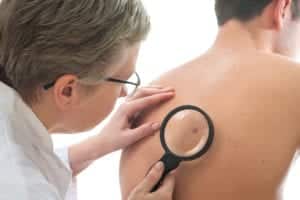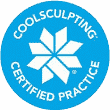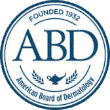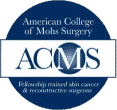Skin cancer is the most common cancer in the United States with over 3 million people being diagnosed each year. Twenty percent of us will develop skin cancer sometime in our lives. The incidence of basal cell carcinoma has increased 145 percent since the 1970s; squamous cell carcinoma cases have increased 263 percent. Scariest of all — the American Cancer Society estimates that one million Americans are living with untreated melanoma.
In sunny Georgia, we all get our share of sun exposure. That’s why if you’re over 35 (younger in higher-risk patients), we need to see you once every year at Georgia Dermatology Partners. Our eight board-certified dermatologists will check your skin from head to toe because the way to beat skin cancer is to detect it as early as possible.
If we need to remove the suspicious lesion or the confirmed skin cancer, you’re in good hands with our experienced team.
What is skin cancer?
Skin cancer occurs when the sun’s ultraviolet rays alter the genetic material in skin cells, causing them to mutate into cancer cells. Your degree of inherent protection can depend on the amount of melanin in your skin. Melanin is responsible for the pigment of our skin, and it acts as protection against sun exposure.

When our skin cells receive UV radiation, the melanin turns the skin a darker tone (tanning), as a protection mechanism.
That’s why fair-skinned people are more susceptible to skin cancer — they have less melanin in their skin. It’s estimated that up to half of all fair-skinned people who live to be at least 65 years old will develop at least one skin cancer in their lives.
What are the different types of skin cancer?
Having one of our eight board-certified dermatologists at Georgia Dermatology Partners check your skin annually is a good idea. Everyone, no matter what your skin type, should also keep an eye on your skin yourself. Have a partner or friend check your back. Here is a description of each of the main forms of skin cancer (along with precancerous actinic keratosis) and what these different varieties look like:
- Actinic keratoses
Actinic keratoses are precancerous skin growths, but if left alone they can turn into basal or squamous cell carcinomas. These precancerous growths will be dry, scaly patches on areas that receive lots of sun exposure. Most people see their first actinic keratoses after age 40.
- Basal cell carcinom
This is the most common type of skin cancer. Eight out of 10 skin cancers are basal cell carcinomas. They grow in the lowest layer of the epidermis, the basal cell layer. These cancers usually develop on sun-exposed areas, especially the head and neck. They tend to grow slowly, and it is rare that they spread to other parts of the body. If left untreated, basal cell carcinomas can grow into nearby areas and invade bone or other tissues beneath the skin, making removal potentially disfiguring.
Basal cell carcinomas look like a flesh-colored, pearl-like bump or pinkish patch of skin.
- Squamous cell carcinoma
The second most common form of skin cancer, squamous cell carcinoma accounts for roughly one fifth of all skin cancers. These cells will look like abnormal versions of the squamous cells that are in the outer layers of the epidermis. Squamous cell cancers appear on sun-exposed areas of the body such as the face, ears, neck, lips, and backs of the hands. They are more likely to spread to other parts of the body than basal cell cancers, but this is still rare.
Squamous cell carcinomas will look like a red firm bump, scaly patch, or a sore that heals and then reopens.
- Melanoma
This deadliest form of skin cancer is also the rarest. But, unlike basal and squamous cell cancers, melanomas are far more likely to grow and spread if left untreated. When melanomas grow downward, they can begin to deposit cancerous cells into the bloodstream, which can then spread the cancer anywhere in the body. That is generally how people die from melanoma, when the cancerous cells grow tumors away from the initial skin lesion.
A melanoma will suddenly appear as a new dark spot on the skin. They will also show as a change in the size, shape, color, or elevation of an existing mole. This is more typical in people with over 50 moles.
What are the treatment options for skin cancer?
As you would expect, your treatment depends on what kind of skin cancer you have and how developed it is. It may be as simple as scooping out a lesion with a curette or we may need to excise the growth.
How we treat your skin cancer at Georgia Dermatology Partners will often be dictated by its location. There are numerous treatment options.

Surgery
Surgery is the typical treatment method. Depending on the size and location of the removed growth, the wound may be sutured closed, covered with a skin graft, or allowed to heal on its own.
These are the surgical procedures:
- Electrodesiccation and curettage — With small or superficial skin cancers, we remove the surface of the skin cancer with a blade or often a scraping instrument known as a curette. Then the base of the cancer is seared with an electric needle. This both closes off blood vessels and kills any stray cancer cells. In some cases, the underlying area is frozen with liquid nitrogen, rather than cauterized with electricity.
- Surgical excision — This involves cutting out the cancerous lesion with a scalpel, along with a margin of healthy skin around it. The sample is then sent to a lab to confirm that removal was successful.
- Cryosurgery — Spraying liquid nitrogen onto growths is the preferred method for removing precancerous actinic keratoses, but it can also be used on very thin basal cell and squamous cell carcinomas with little depth. The problem with this method is that the freezing time may need to be prolonged, which can possibly damage nerves in the area.
- Mohs surgery — This method has the highest success rate of removing all of the skin cancer. Your surgeon removes the cancer growth in expanding rings. After a ring is removed, it is examined immediately to check for any remaining cancer cells on the borders. If cancer cells are still found, another layer or ring is removed. This process is continued until the sample shows itself to be clean. This is especially effective for removing growths on the face, as only the minimum amount of tissue is removed.
Drugs
Topical treatments can be successful on superficial basal cell carcinomas and superficial squamous cell carcinomas with little depth. They can even be effective on early-stage melanoma to decrease the amount of skin to be removed by having the body attack and kill the outermost cancer cells. These drugs work by inflaming the area where they are applied. The body responds by sending white blood cells to attack the inflammation. These white blood cells go after the mutated basal cells. Aldara, Efudex, and Fluoroplex are three of the most used drugs.
At what age should I start having my skin checked?
There really isn’t a stock age where you should begin having your skin checked. The earlier, the better is a good way to look at it, though. If this sounds like you, you should have yearly exams beginning now. You have...
- Fair skin, a tendency to burn rather than tan, freckles, light eye color, light or red hair color
- Had a series of peeling burns in your youth
- Increased numbers of unusual moles, or you have over 50 moles
- A family history of melanoma in an immediate relative
- Already had any form of skin cancer
If you don’t have the above risk factors, 35 to 40 is a good age to start having regular skin exams.
What Treatments are Used for Actinic Keratosis?
Precancerous growths known as actinic keratosis need to be treated. By doing so, you can avoid the progression of skin cancer. Most commonly, actinic keratosis lesions are removed using cryotherapy. This straightforward treatment destroys abnormal tissue through freezing. Tissue is frozen by liquid nitrogen. As the tissue dies and is released, the area may develop blistering and irritation. If you have multiple actinic keratoses across a localized area, the doctor may apply a topical medication across the skin. This may cause general redness and peeling, resulting in more widespread tissue regeneration in which the precancerous growths are obliterated.
Another treatment option for some actinic keratoses is to destroy the abnormal tissue using medication using light. This is referred to as photodynamic blue light therapy. It may be performed over a period of a few days. First, a medication will be applied to the skin to increase its sensitivity to light. After a predetermined period of time, you'd come to the office for light treatment. The special light targets the abnormal cells, causing them to die and slough off.
It's important to receive treatment for precancerous lesions. When you visit one of our four convenient locations, you can expect to receive care that addresses your dermatologic concerns as comfortably, quickly, and efficiently as possible.
Am I a Candidate for Mohs Surgery?
If you are diagnosed with skin cancer, you'll have multiple treatment options to choose from. Mohs micrographic surgery tends to be one of the first choices due to its high success rate. That said, you and your doctor will explore all options carefully to make sure the most suitable treatment is selected. Typically, Mohs is performed on basal cell and squamous cell carcinomas that have developed in more visible areas. It's the leading treatment for significant skin cancers on the scalp, ears, nose, lips, and around the eyes. That said, it's your choice whether or not to have Mohs skin cancer treatment on other areas that may not be as visible, such as the toes or feet, legs, arms, hands, and fingers. Regardless of skin cancer location, Mohs may be recommended if your skin cancer is growing at a rapid pace or has nondistinct borders.
Does Electrodesiccation and Curettage Hurt?
Like cryotherapy, electrodesiccation and curettage is a common method of treating actinic keratoses and superficial basal cell and squamous cell carcinomas. To ensure that this form of treatment is suitable, your dermatologist may first perform a biopsy on the growth that has been found. Electrodesiccation and curettage is best suited for skin cancers that are on the surface of the skin or have formed as small nodules. Anything other than superficial skin cancers may require a more comprehensive form of care, such as excision or Mohs micrographic surgery.
Contact Us!
Contact Georgia Dermatology Partners at 770.972.4845 for more information about Skin Cancer for hair regrowth in Braselton, Loganville and Snellville, Gainesville, Monroe, and Lawrenceville, GA.













